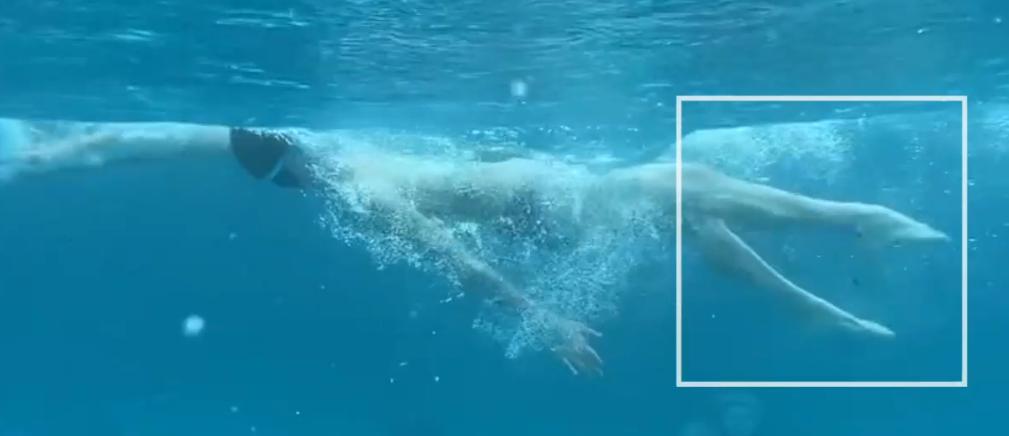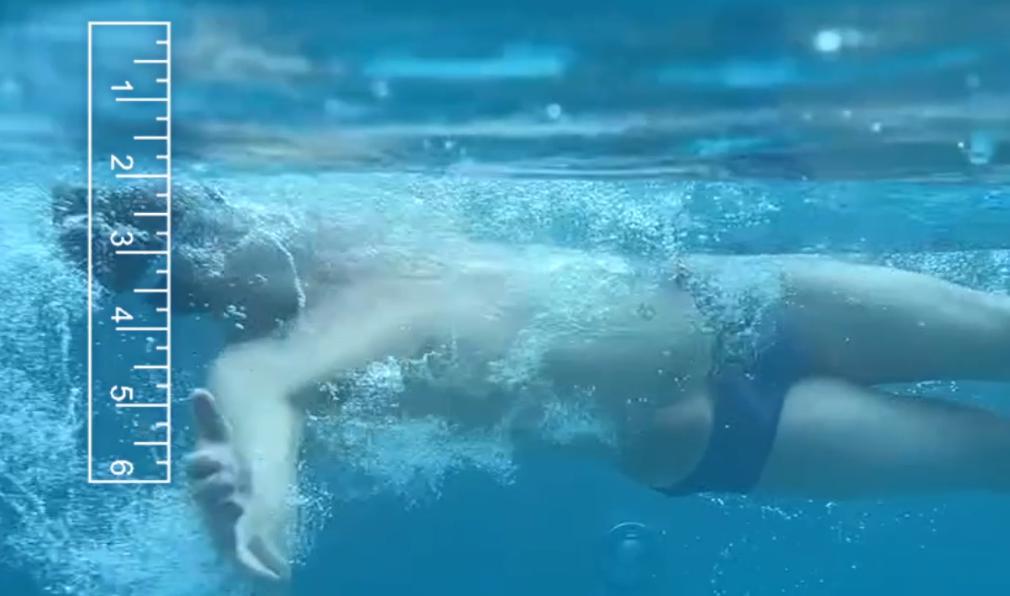Perfect Backstroke Swimming Technique
In this blog post, we’ll learn how to swim backstroke perfectly. There are various techniques that’ll help you swim the perfect backstroke.

When swimming backstroke, your arms come straight above your body. In the following image, we can see the swimmer’s fingertips coming straight above his eyes and entering right behind his head.

Straight Arm Recovery
A straight-arm recovery allows you to reach farther back and creates leverage when pulling. Create all your forward momentum by pulling backward.
Streamline Kick Technique
Like all four strokes in swimming, streamlining is the most important part. Being able to streamline the kick on your back will improve your speed underwater.

Having your arms behind your head like in the above image creates a front quadrant technique that allows your body to stay balanced in the water and helps you create a longer bodyline. A long bodyline in the water makes you more hydrodynamic because you’ll pull more water with each stroke.
Backstroke Head Position

The head position in backstroke is the opposite of freestyle. When you’re on your belly swimming freestyle, you should keep your chin down and tuck away. On backstroke, keep your chip up. Your chin should be higher than your forehead.
Getting a feeling of swimming upside down or tipping backward when swimming backstroke is perfectly normal and it’s the feeling you should seek when swimming the perfect backstroke.
Don’t push your head too far down in the water. Picking your chin up a half inch into the air, once you’ve got it back in the correct position, will prevent water from rushing over your face.
Fix Sinking Legs
A high head position causes sinking legs.
If your head position is too high when swimming backstroke, your legs will start sinking in the water causing a lot of resistance. Your head is like the steering wheel of a car when you swim. Wherever your head turns your body follows. The perfect head position may cause a little water to trickle over your forehead. That’s a good thing! Don’t strain your neck because it’s a sign your head position is too high. Keep the chin tilted back and just pick it up half an inch at most.
4-Step Backstroke Arms Technique

To swim backstroke perfectly, let’s learn the 4 step arm technique.
Step 1: Big Tall Arms
Get your hands high in the air on the recovery stroke. It’ll help you reach farther back and create leverage when pulling. Pull backward to create momentum forwards.
Step 2: Reach Back as Far as You Can
In this second step, reach back as far as you can to grab as much water as possible with every single arm pull. That’ll help you pull more powerfully and effectively to generate maximum speed and balance when swimming backstroke.
Step 3: Strong Invisible Hands

Once your hand enters the water, it becomes almost invisible from above the surface. This is the most important part of the stroke – the pull. It’s like an iceberg; the majority of the work is done under the surface of the water. When you’re pulling on backstroke, you need to have strong hands to put sufficient pressure on the water. Grab as much water as possible in this step.
Step 4: Windmill Arms

Like a windmill, your arms should be operating opposite one another, in tandem. As one hand enters the water, the other should be by your hips. When one arm is straight up in the air, the other should be in the middle of its pull. If the backstroke rotates like a strong windmill, you’ll churn water faster, sturdier, and smoother.
Following the above four steps in order is very important to swimming backstroke perfectly.
Backstroke Kick – Flutter Kick Technique
A backstroke kick is very similar to a freestyle kick. They’re in their own category called the flutter kick because your feet flutter one at a time. The backstroke kick differs than the freestyle kick in one small way.

The backstroke kick should be half as big in volume and twice as fast in frequency. It’s efficient to kick in a smaller box on backstroke. In freestyle, big and steady kicks are recommended; but in backstroke, your kicks should be faster because your body is rotating more quicker.
Competitive Technique – Arms
When your hand enters the water on backstroke, it should be directly behind your head. If it crosses over your bodyline, you’ll pull yourself sideways with every pull. Now you’re snaking down the pool rather than traveling in a straight line. The fastest route between two points is…Your hand landing directly behind your head is more hydrodynamic. It’s all about that water displacement!
Another common mistake made by beginners is entering their hands too far off to the side. That’s called a half stroke which is a common mistake that should be avoided. The arms come straight above your head and reach back directly behind you.
When your hand is underwater, it should have a bit of an elbow bend, but more like a catch, so your elbow is trailing behind your hand. Your hand should be exactly perpendicular to the surface of the water. You’re always traveling in the direction of the back of your hand, so if you’re going backward, you’ll want your palm facing forward.
Your hand should be 6 inches below the surface and your fingertips should be pointing to the side. At the bottom of your pull, pretend like you’re ripping a pocket off the side of your hip.
Competitive Technique – Kicks
Beginners should start by focusing on their feet when kicking. Get your feet fluttering, get them relaxed. Then start focusing on your knees. Start controlling your kicks with just your knees. Once you’ve mastered the feet and the knees, move up to the hips.
Now you’ll start controlling the kicks from your hips using your hip flexors, glutes, lower abdomen, and your core. Stretch as tall as possible to make it easier to kick from your hips. A kick from the hip is also more effective and powerful because it’s like a whip. It’s hard to get a small kick if you start by kicking from your hips, so only advanced and competitive swimmers should be ready to start kicking from their hips and abdomen today.
Competitive Technique – Rotation
Rotating on backstroke is important because the stroke itself isn’t very hydrodynamic. A body on its side is more hydrodynamic than a body that’s flat. When you’re on your side, more of your body is out of the water causing less resistance. A good rotation is when the shoulder of your recovery arm is peaking above the water as you swim.
A shoulder coming out of the water is faster backstroke because it raises the body higher in the water and creates more of a freestyle-like backstroke. The majority of your head should always be under the water because if it’s out of the water, the rest of the body will start sinking.
Watch the following video to learn the perfect backstroke technique.
Related Backstroke Technique Blog Posts











